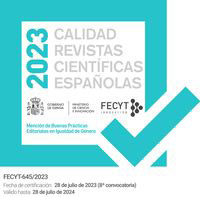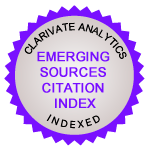Objeciones éticas a la «Donación gestacional de cuerpo entero»
DOI:
https://doi.org/10.14198/doxa.27104Palabras clave:
Anna Smajdor, donación gestacional de cuerpo entero (DGCE), argumento analógico, donación de órganos, técnicas reproductivas, ectogénesisResumen
Este texto presenta objeciones y responde al artículo de Anna Smajdor «Whole body gestational donation» (2023). Se demuestra la insostenibilidad de su propuesta mostrando los defectos entre la argumentación analógica entre la donación de órganos y la donación gestacional de cuerpo entero para, luego, defender que esta propuesta gestacional no es una solución aceptable ni para solucionar los problemas de la gestación por sustitución ni para hacer frente a las altas tasas de morbilidad y mortalidad materna.
Financiación
Este artículo es un resultado del GRC Creación y pensamiento de las mujeres (2021 SGR 01097), financiado por el Departament de Recerca i Universitats de la Generalitat de Catalunya.Citas
Astobiza, A.M., de Miguel Beriain, Í., (2023). Why whole body gestational donation must be rejected: a response to Smajdor. Theoretical Medicine and Bioethics, 44(4), 327–340. https://doi.org/10.1007/s11017-023-09633-3
Atienza, M., (2022). Sobre la gestación por sustitución. Otra vuelta de tuerca. Revista de bioética y derecho, 56, 107–124. https://doi.org/10.1344/rbd2022.56.40721
Barcellos, F. C., Araujo, C. L. y Da Costa, J. D., (2005). Organ donation: a population-based study. Clinical transplantation, 19(1), 33–37. https://doi.org/10.1111/j.1399-0012.2005.00280.x
Ber, R., (2000). Ethical issues in gestational surrogacy. Theoretical Medicine and Bioethics, 21, 153–169. https://doi.org/10.1023/A:1009956218800
Boladeras, M., (2022). ¿Puede la bioética poner límites a la ciencia? Madrid: Tecnos.
Colegio médico colombiano [@ColegioMedicoCo] (1 de febrero de 2023). Twitter. https://twitter.com/ColegioMedicoCo/status/1620634076016431104?s=20
Cook, M., (17 de enero de 2023). New horizons for surrogacy: ‘whole body gestational donation’. BioEdge. Disponible en: https://bioedge.org/beginning-of-life-issues/surrogacy/new-horizons-for-surrogacy-whole-body-gestational-donation/
De Lora, P., (2014). What does «presumed consent» might presume? Preservation measures and uncontrolled donation after circulatory determination of death. Medicine, Health Care and Philosophy, 17, 403–411. https://doi.org/10.1007/s11019-014-9548-y
Epicrisis (12 de febrero de 2023). Polémica sobre la idea de fecundar a mujeres con muerte cerebral. Epicrisis. Disponible en: https://epicrisis.org/2023/02/12/polemica-sobre-la-idea-de-fecundar-a-mujeres-con-muerte-cerebral/
Eslava Gómez, E., (2000). Muerte encefálica y trasplantes [Tesis Doctoral inédita]. Universidad de Navarra: Pamplona. Disponible en: https://www.unav.edu/documents/18304422/19109437/muerte-encefalica-y-trasplantes.pdf
García Manrique, R., (2021). Se vende cuerpo. El debate sobre la venta de órganos. Barcelona: Herder. https://doi.org/10.2307/j.ctv1prsshf
García Muñoz Rodrigo, F., García Alix Pérez, A., García Hernández, J. Á., Figueras Alcoy, J., y Grupo SEN1500, (2014). Morbimortalidad en recién nacidos al límite de la viabilidad en España: estudio de base poblacional. Anales de pediatría, 80(6), 348–356. https://doi.org/10.1016/j.anpedi.2013.12.012
Gutiérrez García, A., Cuervo Pollán, A., (1 de marzo de 2023). Gestación por mujeres en muerte cerebral: ¿dónde está el límite? The Conversation. Disponible en: https://theconversation.com/gestacion-por-mujeres-en-muerte-cerebral-donde-esta-el-limite-200045
Hibino Y., (2023). The advantages and disadvantages of altruistic and commercial surrogacy in India. Philosophy, Ethics, and Humanities in Medicine, 18(1), 1–10. https://doi.org/10.1186/s13010-023-00130-y
Iriarte, J., Palma, J. A., Kufoy, E., de Miguel, J. M., (2012). Brain death: Is it an appropriate term? Neurología, 27(1), 16–21. https://doi.org/10.1016/j.nrl.2010.06.004
Kramer, C., (2015). «Cathrine Kramer presenta “Futuros reproductivos” de Zoe Papadopoulou y Dra. Anna Smajdor. + Humanos. El futuro de nuestra especie» [video]. Disponible en: https://www.cccb.org/es/multimedia/videos/cathrine-kramer-presenta-futuros-reproductivos-de-zoe-papadopoulou-y-dra-anna-smajdor/222596
Kompanje, E.J., Epker, J.L., (2023). Making a dead woman pregnant? A critique of the thought experiment of Anna Smajdor. Theoretical Medicine and Bioethics, 44(4), 341–351. https://doi.org/10.1007/s11017-023-09642-2
Lee, J. Y., (7 de febrero de 2023). What’s the big deal with ‘whole body gestational donation’? On defending bioethics. Blog Journal of Medicine Ethics. Disponible en: https://blogs.bmj.com/medical-ethics/2023/02/07/whats-the-big-deal-with-whole-body-gestational-donation-on-defending-bioethics/
Lewis, S., (2019). Full Surrogacy Now. E-flux journal, 99, 1–12. Disponible en: http://worker01.e-flux.com/pdf/article_261641.pdf
Ley Orgánica 1/1982, de 5 de mayo, de protección civil del derecho al honor, a la intimidad personal y familiar y a la propia imagen. Disponible en:
https://www.boe.es/eli/es/lo/1982/05/05/1/con
Mackay, A., Taylor, S., y Glass, B., (2023). Inequity of Access: Scoping the Barriers to Assisted Reproductive Technologies. Pharmacy, 11(1), 1–17. http://dx.doi.org/10.3390/pharmacy11010017
Martínez Otero, J. M., (2017). La hipertrofia del principio de autonomía en el debate bioético. Cuadernos de bioética, XXVIII (3), 329–340. Disponible en: https://www.redalyc.org/comocitar.oa?id=87553352004
Montanari Vergallo, G., Gulino, M., (2023). Is whole-body gestational donation without explicit consent a valid alternative to surrogate motherhood? An ethical analysis through analogy reasoning and principlist approach. Theoretical Medicine and Bioethics, 44(4), 387–391. https://doi.org/10.1007/s11017-023-09634-2
OMS (22 de febrero de 2023). Mortalidad Materna. OMS. Disponible en: https://www.who.int/es/news-room/fact-sheets/detail/maternal-mortality
Palazzani, L., (2004). Cuerpo y sujeto en bioética. Cuadernos de bioética, 15(53), 17–28. Disponible en: http://aebioetica.org/revistas/2004/15/1/53/17.pdf
Parfit, D., (2017). Future people, the non identity problem, and person affecting principles. Philosophy & Public Affairs, 45(2), 118–157. https://doi.org/10.1111/papa.12088
Popa, E., Zawiła-Niedźwiecki, J. & Zabdyr-Jamróz, M., (2023). Policy change without ethical analysis? Commentary on the publication of Smajdor. Theoretical Medicine and Bioethics, 44(2), 379–385. https://doi.org/10.1007/s11017-023-09631-5
Räsänen, J., Häyry, M. y Takala, T., (2023). Introduction: controversial arguments in bioethics. Theoretical Medicine and Bioethics, 44(2), 109–112. https://doi.org/10.1007/s11017-023-09617-3
Real Decreto 1723/2012, de 28 de diciembre, por el que se regulan las actividades de obtención, utilización clínica y coordinación territorial de los órganos humanos destinados al trasplante y se establecen requisitos de calidad y seguridad. Disponible en: https://www.boe.es/buscar/act.php?id=BOE-A-2012-15715
Reynoso, L., (2 de febrero de 2023). Usar mujeres con muerte cerebral para la gestación subrogada: la polémica publicación que obligó a rectificar al Colegio Médico Colombiano. El País. Disponible en: https://elpais.com/america-colombia/2023-02-02/usar-mujeres-con-muerte-cerebral-para-la-gestacion-subrogada-la-polemica-publicacion-que-obligo-a-rectificar-al-colegio-de-medicos-colombiano.html#?prm=copy_link
Rodríguez-Arias, D., (2013). Ni vivo ni muerto, sino todo lo contrario. Reflexiones sobre la muerte cerebral. Arbor, 189(763), a067. http://dx.doi.org/10.3989/arbor.2013.763n5004.
Roman, G., Zimova, I., Antoni, H., Minarcikova, P., Ventruba, P., Hruban, L. y Hrdy, O., (2021). Delivery of a Healthy Baby from a Brain-Dead Woman After 117 Days of Somatic Support: A Case Report. The American Journal of Case Reports, 22, e930926-1-7. https://doi.org/10.12659/ajcr.930926
Said, A., Amer, A. J., Ur Rahman, M., Dirar, A. y Faris, Ch., (2013). A brain-dead pregnant woman with prolonged somatic support and successful neonatal outcome: A grand rounds case with a detailed review of literature and ethical considerations. International Jour¬nal of Critical Illness and Injury Science, 3, 220–224. https://doi.org/10.4103/2229-5151.119205.
Savulescu J., (2001). Procreative beneficence: why we should select the best children. Bioethics, 15(5-6), 413–426. https://doi.org/10.1111/1467-8519.00251
Smajdor, A., (2007). The Moral Imperative for Ectogenesis. Cambridge Quarterly of Healthcare Ethics, 16, 336–345. https://doi.org/10.1017/S0963180107070405
Smajdor, A., (2008). Reproduction with artificial gametes: Ethical and regulatory concerns. PhD Thesis. Imperial College, London.
Smajdor, A., (2023a). Whole body gestational donation. Theoretical Medicine and Bioethics, 44(2), 113–124. https://doi.org/10.1007/s11017-022-09599-8
Smajdor, A., (2023b). Beyond the sound and fury: Whole body gestational donation. Bionews, 1178. Disponible en: https://www.progress.org.uk/beyond-the-sound-and-fury-whole-body-gestational-donation/
Smajdor, A., (2023c). Response to comments on my paper on whole body gestational donation. Theoretical Medicine and Bioethics, 44(4), 393–399. https://doi.org/10.1007/s11017-023-09646-y
Sparrow, R., (2008). Is it ‘every man’s right to have babies if he wants them’? Male pregnancy and the limits of reproductive liberty. Kennedy Institute of Ethics Journal, 18(3), 275–299. Disponible en: https://doi.org/10.1353/ken.0.0198
Sulmasy, D. P., (2023). The virtues and the vices of the outrageous. Theoretical Medicine and Bioethics, 44, 107–108. https://doi.org/10.1007/s11017-023-09620-8
Tribunal Supremo, STS 277/2022, de 31 de marzo de 2022. Disponible en: https://www.poderjudicial.es/search/AN/openDocument/0e6219d460d65731/20220405
Villa, V., (2017). Disaccordi interpretativi profondi. Saggio di metagiurisprudenza ricostruttiva. Torino: G. Giappichelli Editore.
Waller, B. N. (2001). Classifying and Analyzing Analogies. Informal Logic, 21(3), 199–218. https://doi.org/10.22329/il.v21i3.2246
Descargas
Estadísticas
Publicado
Cómo citar
Número
Sección
Licencia
Derechos de autor 2025 Montserrat Crespín Perales

Esta obra está bajo una licencia internacional Creative Commons Atribución-NoComercial-CompartirIgual 4.0.





